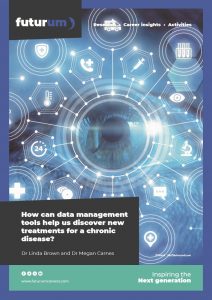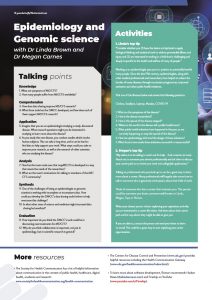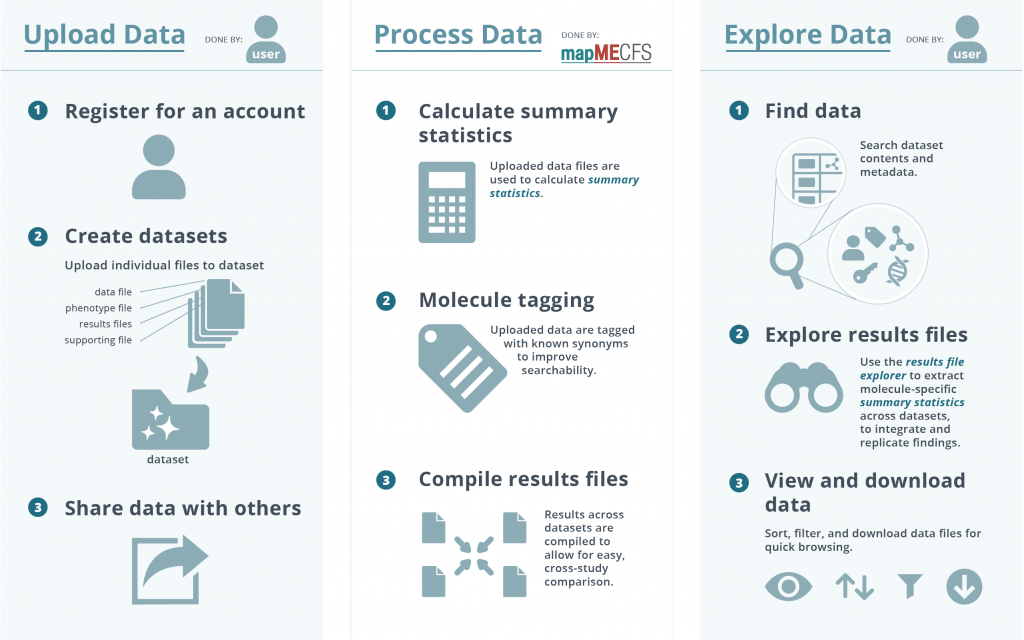How can data management tools help us discover new treatments for a chronic disease?
Myalgic encephalomyelitis/chronic fatigue syndrome (ME/CFS) is a complex disease that can take a huge toll on a person’s everyday life. There is still much we do not know about the disease, and researchers are working hard to learn more about what causes it. Dr Linda Brown, an epidemiologist, and Dr Megan Carnes, a genomics research scientist, from RTI International in the US have developed a suite of data management tools to help ME/CFS researchers to collaborate in the hope of finding new treatments.
Talk like an epidemiologist or genomics scientist
Biospecimens — materials taken from the human body, such as tissue or blood, that can then be used for research
Data analytics — processing, examining and analysing datasets to find patterns and trends and to draw conclusions about the information in the data
Data management — collecting, organising and storing data safely, protecting privacy and allowing access to researchers only
Data integration tool — software that can combine different datasets so they can be analysed further
Myalgic encephalomyelitis/chronic fatigue syndrome (MS/CFS) — a long-term disease that causes extreme tiredness and other symptoms such as pain, dizziness and memory loss. Other symptoms can include problems with sleep, thinking and concentration. Often, people with ME/CFS are unable to do their usual activities. At times, they cannot get out of bed. People with ME/CFS have severe fatigue that is not improved by rest. ME/CFS can get worse after any activity, whether it is physical or mental. This symptom is known as post-exertional malaise (PEM).
Sometimes, when we are ill or overworked, we wake up feeling as though we have not slept a wink. If you have had a bad night’s sleep, it can take all your energy to open your eyes and get out of bed. At times like these, the thought of having to go to school or work can seem impossible.
Luckily, for most of us, these days are few and far between, and, although we may never get used to an early alarm clock, we are able to get up and tackle whatever the day has in store for us. For people with myalgic encephalomyelitis/chronic fatigue syndrome (ME/CFS), daily life is far more difficult. ME/CFS is a serious, long-term illness that can change a person’s life completely, leaving them unable to do things that most of us take for granted, including going to school or work, taking a walk, or even getting out of bed.
People with ME/CFS have extreme fatigue and find it difficult, or even impossible, to get a good night’s sleep. They may develop problems with their memory and ability to focus. They may also have debilitating and unbearable pain and dizziness. These symptoms are associated with post-exertional malaise (PEM), when the brain and the body cannot recover from even tiny amounts of activity.
ME/CFS can affect anyone, no matter their age, gender or ethnic background. However, women are two to four times more likely to be diagnosed with ME/ CFS than men. It is estimated that almost 17 million people around the world have ME/CFS; however, it is likely that many more people remain undiagnosed.
One of the biggest problems with ME/CFS is that we do not know what causes it. Researchers, medical professionals, and scientists all over the world are trying to understand what triggers the disease so that new treatments can be developed. To do this, researchers need access to as much data about ME/ CFS as possible.
Dr Linda Brown and Dr Megan Carnes work at RTI International, a non-profit research institute that is dedicated to improving the quality of people’s lives. They are working with a team of researchers to develop new data-sharing tools that will allow more collaboration and communication between ME/CFS researchers, medical professionals and people with ME/CFS.
Collaboration and data sharing
Encouraging researchers and medical professionals to share data and store them in centralised, easily accessible databases makes collaboration much more effective. Sharing data and encouraging collaboration can advance ME/CFS research by enabling researchers to better validate their results, reuse data that is difficult to generate, and perform stronger analyses by combining datasets. “By promoting communication between ME/CFS clinicians and researchers, we hope to accelerate future research,” says Linda.
Current research
“A number of institutions and organisations around the globe are undertaking innovative basic and clinical research,” says Linda. Some of this research focuses on finding the causes of ME/CFS and how it develops and changes over time. Other researchers are studying the different subtypes of ME/CFS and their different symptoms. However, most current research is focused on identifying potential treatments for ME/CFS. No matter what the focus of the research, access to data is very important.
A scientific community
Reference
https://doi.org/10.33424/FUTURUM436
In 2017, the US National Institutes of Health (NIH) established the ME/CFS Collaborative Research Network. The goal of this network is to conduct basic scientific and clinical research to better understand the causes, symptoms and treatments of ME/CFS.
“A basic research project might characterise cellular and molecular mechanisms of disease processes, while a clinical research project might follow a group of people with ME/CFS and a comparison group of healthy people,” explains Linda. To support this research, the NIH supported RTI to set up a Data Management and Coordinating Center (DMCC), which helps the collaborative research centres manage their data.
“The DMCC supports research by providing administrative management and logistics, and expertise in data management and data analytics,” says Linda. The team of researchers at the DMCC has developed three tools which help to facilitate collaboration and communication in ME/CFS research.
The DMCC has created a website, called MECFSnet, which contains information about ME/CFS. The website has tools and other resources to help support people with ME/CFS and the researchers who are studying it. The team has also created searchMECFS, a tool that allows researchers to obtain biospecimens for their research, and mapMECFS, a data sharing tool.
mapMECFS
mapMECFS is the largest data repository for ME/CFS data and serves as a primary location for researchers to share the results they generate in their laboratories. Research that involves human subjects requires careful planning and ethical reviews, as well as participant briefings, enrolment and follow-up. As a result, these studies can be costly and take many years to complete.
“It is essential that researchers share the data they generate with the scientific community to maximise what can be learned from each study,” says Megan. mapMECFS allows researchers to access data from the latest research and use data from other studies to inform their own research.
“As a subject matter expert, my job is to understand the needs of the researchers, including their data and its complexity, and to translate those needs so the software developers can create new tools,” explains Megan. These tools include a data explorer which can, for example, allow researchers to search for a gene of interest and find the studies that have investigated that gene. “We also developed a data integration tool that allows researchers to quickly merge clinical data files,” says Megan.
The next steps
mapMECFS will continue to grow as researchers upload data. “The development of mapMECFS is ‘user-centred’, which means that we prioritise site changes based on the feedback we receive from researchers using the site,” says Megan.
The needs of the researchers will determine how mapMECFS changes in the future. Megan expects that the team may create new data visualisation tools, increase the amount of data that the site’s integration tool can process, and improve the site’s ability to check the quality of the data. “The overall goal of this work is to make scientific data more accessible,” she says. Linda and Megan hope that their work will continue to support researchers with the goals of understanding the biology of ME/CFS and developing new treatments.
 Dr Linda Brown
Dr Linda Brown
Senior Research Epidemiologist, RTI International, USA
Dr Megan Carnes
Genomics Research Scientist, RTI International, USA
Fields of research: Epidemiology, Genomics
Research project: Developing tools that allow myalgic encephalomyelitis/ chronic fatigue syndrome (ME/CFS) researchers to share data and collaborate
Funders: US National Institutes of Health (NIH): National Institute of Neurological Disorders and Stroke (NINDS); National Institute of Allergy and Infectious Diseases (NIAID); National Heart, Lung, and Blood Institute (NHLBI); National Center for Complementary and Integrative Health (NCCIH); and National Institute on Alcohol Abuse and Alcoholism (NIAAA)
This work was supported by the National Institutes of Health (NIH) under award number U24NS105535. The contents are solely the responsibility of the authors and do not necessarily represent the official views of the NIH or RTI International.
About epidemiology and genomic science
Epidemiologists study the causes, distribution, control and prevention of diseases. Information gained from epidemiological studies can be used to understand how prevalent diseases are, how they are transmitted and how best to prevent them from spreading. Epidemiological research played a vital role in understanding the spread of COVID-19 and informing policies and strategies to reduce its spread. ME/CFS is not a contagious disease; however, epidemiology can still help us understand why it occurs in certain people and develop new treatments.
Genomic scientists study the genome of an organism, that is, all the genes, their characteristics and gene products (e.g., proteins) to better understand how they function. The goal is to learn about the biology of a disease and to identify new treatments or biomarkers. Biomarkers are objective evidence of disease that can be measured in a laboratory and used to help doctors diagnosis and treat diseases.
Challenges
“Some of the challenges epidemiologists and genomic scientists encounter include working with incomplete or inconsistent data and complex datasets that require advanced statistical methods to analyse them,” says Linda. Epidemiologists and genomic scientists must also have excellent problem solving and communication skills. Their research is often complex, and they must be able to clearly communicate their findings to other researchers, medical professionals and people with the disease being studied.
Rewards
“One of the rewards of working in epidemiology and genomic science is the ability to work in a variety of different settings and on a variety of different diseases and conditions that affect the health of the public,” says Linda. This keeps things interesting and allows epidemiologists and genomic scientists to have a real-life, positive impact on people’s lives.
Opportunities
The next generation of epidemiologists and genomic scientists will have a lot to keep them busy, whether they are working on new infectious diseases or on chronic public health problems, such as obesity, substance abuse and mental health. “Because epidemiologists investigate the causes of disease and other public health problems, the need for epidemiologists is projected to grow by more than 25% over the next 10 years,” explains Linda. The same is true for genomic scientists who may specialise in studying human diseases that are common, such as cancer, or rare diseases. Some fields of genomic science are disease agnostic, meaning the focus is more on understanding how the genome functions in a healthy organism. “Epidemiologists and genomic scientists work in a number of settings such as universities, government agencies, and private industry, including pharmaceutical companies,” says Megan.
Pathway from school to epidemiology and genomic science
• It is important to gain a strong understanding of science at high school. Studying biology, chemistry, physics and statistics will prepare you for college or university.
• For epidemiology, you should obtain a bachelor’s degree in a related field such as health science, biology or biostatistics. This will allow you to enrol in a graduate programme that specialises in epidemiology.
• For genomic science, you should obtain a bachelor’s degree in a related field such as genetics, biology or computational biology. This will allow you to enrol in a graduate programme that specialises in genetics, genomics, bioinformatics or genetic epidemiology.
• Contact your local university for internship opportunities. Summer schools are another way to gain practical experience. For example, the University of Manchester in the UK runs a Public Health Summer School that provides students with an in-depth introduction to epidemiology.
Explore careers in epidemiology and genomic science
• Have a look on some of the major societies’ websites such as The Society for Epidemiological Research, the International Epidemiological Association, the International Society for Environmental Epidemiology, and the National Human Genome Research Institute.
• Have a look at the Your Local Epidemiologist blog run by Dr Katelyn Jetelina, an epidemiologist and data scientist.
• Get in touch with an epidemiologist or genomic scientist at your local university and see if they would be willing to answer some questions. Talking to a professional about what their job is like is a great way to learn more about a specific career.
Meet Roman
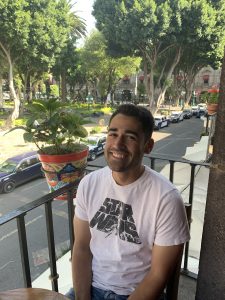
Roman Ruiz-Esparza is a Lead Software Developer at the RTI’s Center for Data Science.
I first got into web development in high school using Notepad to edit HTML. From there, I got a few internships through college making web apps. Then, I worked at two other organisations doing similar work before arriving here at RTI and working on this project.
I work from home, so I always start my day walking my dog Chevi and making a pot of coffee. I sit at my desk and open up VS Code (a code editor) and a web browser and get to work. Work is either adding a new feature, like making the app able to process new data, or fixing a bug in prior work.
When I started on the project, the deployment process was very manual, which is prone to error. Ideally, you want to push your code, and it gets tested and deployed automatically. I learned this process at my last job, but here I got to implement it myself.
mapMECFS at its most basic is a file-sharing website. Researchers can upload their datasets for sharing with others, and download data that others have shared. We also enhance that experience by allowing users to search metadata or the actual datasets. And we automatically compute statistics on certain datasets, to give researchers even more information.
We use the same codebase for another project, and we’ve had interest in using it for additional projects, so I’m currently working on making the software more extensible and faster to develop on. This is a common problem in the field, so it’s very interesting to me to work on it.
Roman’s top tips
1. Be humble.
2. Have confidence in your abilities.
3. Remember that everything around you was built by people just like you.
Meet Taya
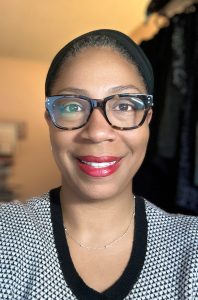
Taya McMillan is a Research Communication Analyst at the RTI International’s Center for Communication Strategy and Design.
Early in my career, I created health education materials at a federal agency. My responsibilities increased over time, and I developed a deeper understanding of the importance of health literacy, plain language and compelling messaging. When done correctly, communications, whether digital, web-based or print, can increase knowledge, awareness and beliefs, which can lead to changes in behaviour. These changes, no matter how small, can help improve the overall health and well-being of individuals.
I work on several projects, and my role is different for each. I often spend the first few hours of my day writing or creating tools or content that require a lot of focus. I usually have a handful of meetings and follow-ups with people on my team, and often do some basic research to inform decisions that need to be made. I always have my eyes and ears open for new and creative ways to share information. In that way, each day is a learning opportunity.
We engage members of the ME/CFS community through our Community Outreach Working Group (COWG), which includes people with ME/CFS, caregivers, advocates and researchers from our network. To be successful, we need a collaborative approach that includes the voices of people with ME/CFS.
Consultations with the ME/CFS community proved invaluable when we were designing the website. We were able to take their insights and apply them directly to our web design. For example, because CFS is often emphasised more than ME, we decided to go with an eye-catching colour with bold font for ME and a grey colour for CFS when creating the logo for the website.
We wanted to create a website that was informative and easy to navigate for people with ME/CFS. For example, people with ME/CFS sometimes get tired when using a computer and may need to take a break. The return feature on the website allows a person to return to the last place they visited on the website without spending time or energy trying to find their last location.
Taya’s top tips
1. Never be afraid to try something new.
2. Roll up your sleeves and don’t be afraid of hard work.
3. Do your best every time.
Do you have a question for Linda, Megan, Roman or Taya?
Write it in the comments box below and Linda, Megan, Roman or Taya will get back to you. (Remember, researchers are very busy people, so you may have to wait a few days.)

